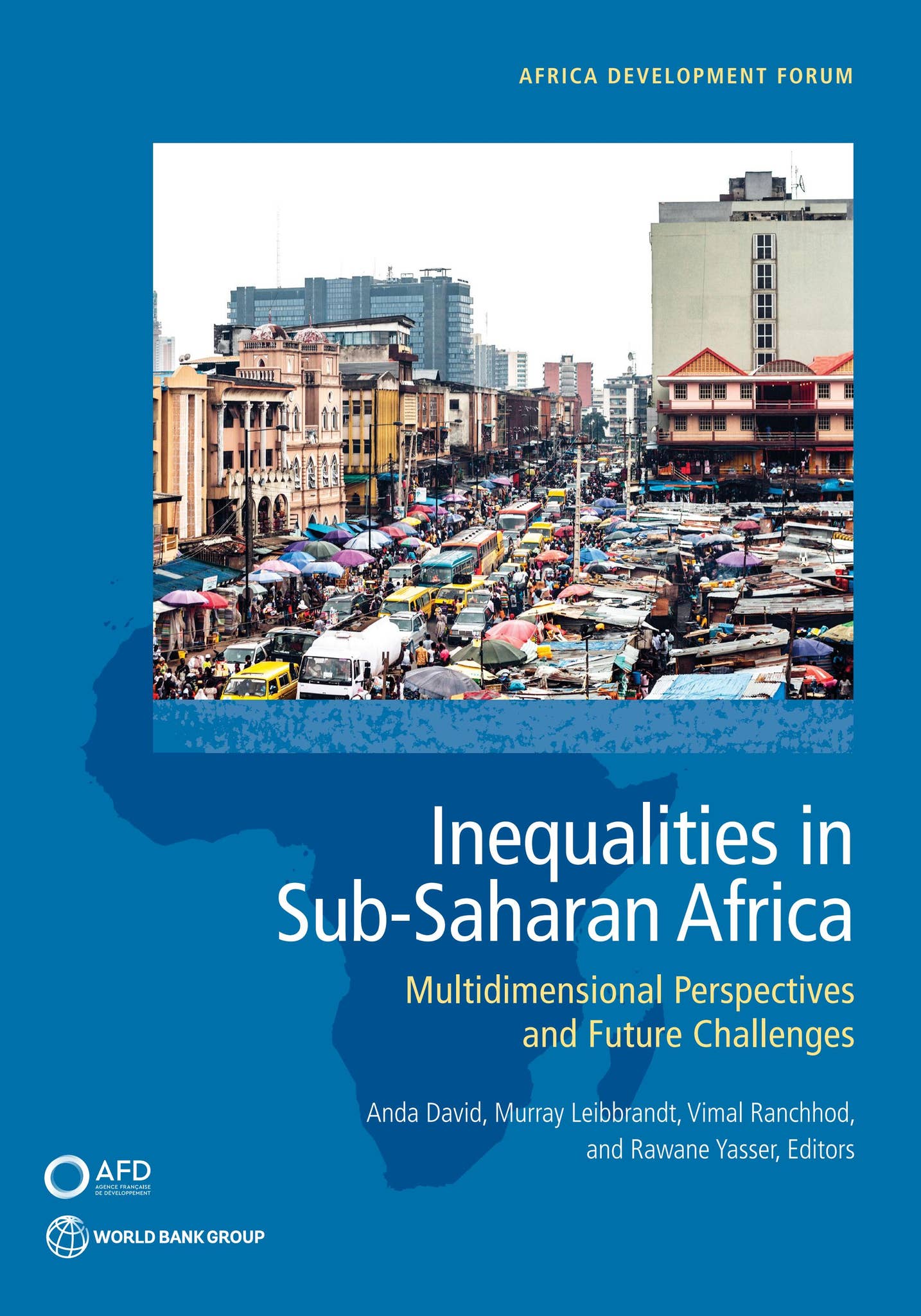Economic development benefits or social inequality hinders? Intergenerational educational mobility in 49 countries – Nature

Report on Contextual Factors Affecting Intergenerational Educational Mobility
A Global Analysis Across 49 Countries in the Context of the Sustainable Development Goals
Executive Summary
This report analyzes the effects of contextual factors on intergenerational educational mobility (IEM) across 49 countries, with a significant focus on its implications for achieving the Sustainable Development Goals (SDGs). Utilizing global survey data and multilevel linear models, the study yields three primary conclusions directly relevant to SDG 4 (Quality Education), SDG 5 (Gender Equality), and SDG 10 (Reduced Inequalities).
- The positive impact of economic development on educational mobility is significantly diminished in nations with high levels of income inequality. This suggests that progress on SDG 10 is a prerequisite for fully realizing the educational benefits associated with SDG 8 (Decent Work and Economic Growth).
- Women’s educational mobility is more susceptible to macro-environmental factors than men’s. This highlights a critical vulnerability in the pursuit of SDG 5, as societal improvements disproportionately benefit women, while downturns disproportionately harm them.
- Younger cohorts benefit more from expanded educational opportunities driven by economic growth, whereas older cohorts are more constrained by socioeconomic inequality. This generational divide has implications for ensuring inclusive and equitable quality education (SDG 4) for all age groups.
Introduction: Intergenerational Educational Mobility and the Sustainable Development Goals
Intergenerational educational mobility (IEM) is a critical indicator of social fairness and equality of opportunity. It measures the extent to which an individual’s educational attainment is independent of their parents’ education. High IEM aligns directly with the ambitions of the Sustainable Development Goals, particularly:
- SDG 4 (Quality Education): Ensuring inclusive and equitable quality education and promoting lifelong learning opportunities for all. High IEM signifies that access to quality education is not determined by family background.
- SDG 10 (Reduced Inequalities): Reducing inequality within and among countries. Breaking the cycle of intergenerational disadvantage through education is fundamental to achieving this goal.
- SDG 5 (Gender Equality): Achieving gender equality and empowering all women and girls. Analyzing IEM by gender reveals structural barriers that prevent equal educational opportunities.
- SDG 8 (Decent Work and Economic Growth): Promoting sustained, inclusive, and sustainable economic growth. Educational attainment is a key driver of economic mobility and access to decent work.
This report examines the interplay between economic development and social inequality, framing their opposing effects on IEM within the broader context of achieving these interconnected SDGs.
Methodology and Scope of Analysis
The analysis is based on a comprehensive dataset combining the European Value Study (EVS) and the World Value Survey (WVS). This provides individual-level data on educational attainment for respondents and their parents across a diverse range of 49 countries and territories.
Data Sources:
- Individual-Level Data: Joint EVS/WVS survey (2017–2021), with a final sample of 64,514 individuals aged 25-65.
- National-Level Data: Macroeconomic indicators were sourced from the United Nations Statistics Division, the World Income Inequality Database (WIID), and UNESCO.
Analytical Approach:
Multilevel linear models (MLM) were employed to analyze the nested data structure (individuals within countries). This approach allows for the examination of how national-level factors—such as economic development and income inequality—moderate the relationship between parental and child educational attainment, thereby influencing progress towards the SDGs.
Key Findings: Contextual Factors Impacting SDG Achievement
SDG 10 (Reduced Inequalities): The Overriding Impact of Income Inequality
The study’s primary finding reveals that high income inequality acts as a significant barrier to educational mobility, effectively neutralizing the benefits of economic growth. This directly challenges the assumption that economic development alone can foster the conditions for achieving SDG 4.
- In countries with lower levels of inequality, economic development has a strong, statistically significant effect on promoting educational mobility.
- In countries with higher levels of inequality, the mobility-promoting effect of economic development is weakened and becomes statistically insignificant.
- This suggests that as income inequality rises, its inhibiting effect on mobility outweighs the positive influence of economic growth. Efforts to reduce inequality (SDG 10) are therefore crucial for unlocking the potential of economic development to enhance educational opportunities for all.
SDG 5 (Gender Equality): Disproportionate Effects on Women’s Educational Mobility
The analysis demonstrates that macro-level societal conditions have a more pronounced impact on women’s educational mobility than on men’s, highlighting a key challenge for SDG 5.
- Positive Environments: When the external social environment improves (e.g., through economic growth and public education spending), women experience a greater increase in educational mobility compared to men.
- Negative Environments: When the social environment deteriorates (e.g., through rising income inequality), women’s educational attainment becomes more rigidly tied to their family background, and their mobility opportunities decrease more rapidly than men’s.
- This heightened sensitivity indicates that women are more vulnerable to both the opportunities and the restrictions presented by the macroeconomic context, underscoring the need for targeted policies to protect and advance women’s educational attainment.
SDG 4 (Quality Education) & SDG 8 (Economic Growth): Generational Disparities
The study identifies significant differences between age cohorts in how they are affected by economic growth and inequality, which has direct implications for ensuring lifelong learning opportunities under SDG 4.
- Younger Cohorts (born after 1990): This group benefits more significantly from the expanded educational opportunities created by economic growth (SDG 8). The influence of parental education on their attainment is noticeably reduced by rising GDP per capita and public education spending.
- Older Cohorts (born before 1960): This group is more susceptible to the mobility-inhibiting effects of income inequality. For them, rising inequality significantly strengthens the link between their educational attainment and that of their parents.
These findings suggest that while policies promoting economic growth can create educational opportunities for youth, structural inequalities continue to restrict mobility for older generations, reinforcing the importance of a life-course approach to achieving SDG 4.
Policy Implications for Sustainable Development
The findings of this report offer critical insights for policymakers aiming to achieve the Sustainable Development Goals.
- Integrate SDG 10 and SDG 4: Policies aimed at improving educational equity (SDG 4) must be accompanied by robust measures to reduce income inequality (SDG 10). Without addressing wealth disparities, the benefits of economic growth may fail to translate into broader educational mobility.
- Gender-Responsive Educational Policies: To advance SDG 5, policies must be designed to mitigate the heightened vulnerability of women to negative economic conditions and ensure they can fully capitalize on periods of growth. This includes protecting educational investments for girls and women during economic downturns.
- Target Youth and Address Structural Barriers: While younger generations benefit from economic expansion, it is crucial to dismantle the structural inequalities that continue to hinder educational mobility for all, particularly older cohorts. This requires a dual focus on expanding opportunities and removing systemic barriers.
Conclusion: An Integrated Approach to Sustainable Development
This research underscores the intricate connections between economic development, social inequality, and intergenerational educational mobility. It concludes that a siloed approach to the Sustainable Development Goals is insufficient. Achieving inclusive and equitable quality education (SDG 4) is not merely a matter of increasing public spending or fostering economic growth. It is fundamentally dependent on creating more equitable societies by reducing income inequality (SDG 10) and ensuring that opportunities are accessible to all, regardless of gender (SDG 5) or generational cohort. The path to sustainable development requires an integrated framework where social equity is recognized as a prerequisite for, and not just a consequence of, economic progress.
Analysis of Sustainable Development Goals in the Article
1. Which SDGs are addressed or connected to the issues highlighted in the article?
The article on intergenerational educational mobility (IEM) directly addresses and connects to several Sustainable Development Goals (SDGs) by examining the interplay of education, inequality, economic development, and gender.
-
SDG 4: Quality Education
This is the most central SDG to the article. The entire study revolves around “Intergenerational educational mobility (IEM), an indicator depicting the influence of parental education on their children’s education.” The article explores the factors that promote or hinder equitable educational opportunities, which is the core mission of SDG 4.
-
SDG 10: Reduced Inequalities
The article’s primary conclusion is that “income inequality hinders socioeconomic development’s efforts to positively enhance educational mobility.” It extensively analyzes how social and income inequality creates barriers to educational attainment for children from lower socioeconomic backgrounds, directly aligning with SDG 10’s goal to reduce inequality within and among countries.
-
SDG 5: Gender Equality
The study explicitly investigates the heterogeneous effects of macro-level factors on gender. One of its key findings is that “women’s intergenerational educational mobility is more strongly influenced by macro factors than men’s.” This analysis of gender-specific barriers and opportunities in education directly connects to SDG 5.
-
SDG 8: Decent Work and Economic Growth
The article analyzes the “mobility-promoting effects of economic development” as a primary contextual factor. It examines how economic growth, measured by GDP per capita, influences educational opportunities and social mobility, linking the study to SDG 8’s aim for sustained and inclusive economic growth.
2. What specific targets under those SDGs can be identified based on the article’s content?
Based on the article’s analysis, several specific SDG targets can be identified:
-
SDG 4: Quality Education
- Target 4.3: By 2030, ensure equal access for all women and men to affordable and quality technical, vocational and tertiary education, including university. The article’s focus on educational attainment beyond secondary school and the factors influencing it directly relates to this target.
- Target 4.5: By 2030, eliminate gender disparities in education and ensure equal access to all levels of education and vocational training for the vulnerable… The study’s detailed analysis of how educational mobility differs between men and women, and between different cohorts, directly addresses the need to eliminate disparities and ensure equal access.
-
SDG 10: Reduced Inequalities
- Target 10.2: By 2030, empower and promote the social, economic and political inclusion of all, irrespective of age, sex, disability, race, ethnicity, origin, religion or economic or other status. The article demonstrates how high income inequality inhibits the social and economic inclusion of individuals from lower-class backgrounds by limiting their educational mobility.
- Target 10.3: Ensure equal opportunity and reduce inequalities of outcome… The concept of Intergenerational Educational Mobility (IEM) is a direct measure of equality of opportunity. The article’s finding that inequality constrains mobility is a clear analysis of this target.
-
SDG 5: Gender Equality
- Target 5.1: End all forms of discrimination against all women and girls everywhere. The finding that women are more susceptible to negative macro-environmental changes (“when the social environment deteriorates, women’s educational solidification grows rapidly”) highlights a form of structural discrimination that limits their opportunities compared to men.
-
SDG 8: Decent Work and Economic Growth
- Target 8.1: Sustain per capita economic growth in accordance with national circumstances… The article uses GDP per capita as a key variable to test the “economic development theory,” which posits that economic progress positively impacts social mobility and educational attainment.
3. Are there any indicators mentioned or implied in the article that can be used to measure progress towards the identified targets?
Yes, the article explicitly uses or implies several indicators that align with the official SDG indicators or serve as robust proxies for measuring progress.
-
Indicators for SDG 4 (Quality Education)
- Intergenerational Educational Mobility (IEM): The article defines and uses IEM as its primary dependent variable. This serves as a powerful implied indicator for Target 4.5, as it measures the extent to which educational opportunities are equitable and independent of family background.
- Public expenditure on education (% of GDP): This is explicitly used as a national-level variable in the analysis. It is a direct measure related to SDG Indicator 4.a.1, which assesses government investment in educational facilities and resources.
- Years of schooling: The study converts educational levels into “equivalent years, an interval variable” for both respondents and their parents. This is a direct measure of educational attainment.
-
Indicators for SDG 10 (Reduced Inequalities)
- Income ratio of the top 20% to the bottom 20%: The article explicitly uses this measure for “income inequality.” This is a direct indicator of income disparity within a country and is conceptually similar to the Gini coefficient used in official SDG monitoring for Target 10.2.
-
Indicators for SDG 5 (Gender Equality)
- Gender-disaggregated IEM coefficients: The study conducts sub-sample analyses for males and females. The difference in the coefficients, showing that “the mobility-promoting effects of GDP per capita and public educational support on IEM for women are about 1.9 times than that of men,” serves as a clear, implied indicator of gender disparity in educational opportunity (Target 5.1).
-
Indicators for SDG 8 (Decent Work and Economic Growth)
- GDP per capita: This is explicitly used as the measure for “Economic development.” It is a proxy for SDG Indicator 8.1.1 (Annual growth rate of real GDP per capita).
4. Table of SDGs, Targets, and Indicators
| SDGs | Targets | Indicators Identified in the Article |
|---|---|---|
| SDG 4: Quality Education |
|
|
| SDG 5: Gender Equality |
|
|
| SDG 8: Decent Work and Economic Growth |
|
|
| SDG 10: Reduced Inequalities |
|
|
Source: nature.com

What is Your Reaction?
 Like
0
Like
0
 Dislike
0
Dislike
0
 Love
0
Love
0
 Funny
0
Funny
0
 Angry
0
Angry
0
 Sad
0
Sad
0
 Wow
0
Wow
0

















































:focal(1500,1000)/https://media.globalcitizen.org/a6/9a/a69a4720-d8a1-4715-b596-18738d03c05c/rotary_polio_hero_image.jpg?#)






/countries/sri-lanka/photo-credit---dmc-sri-lanka.tmb-1200v.jpg?sfvrsn=dc298bcc_1#)
















